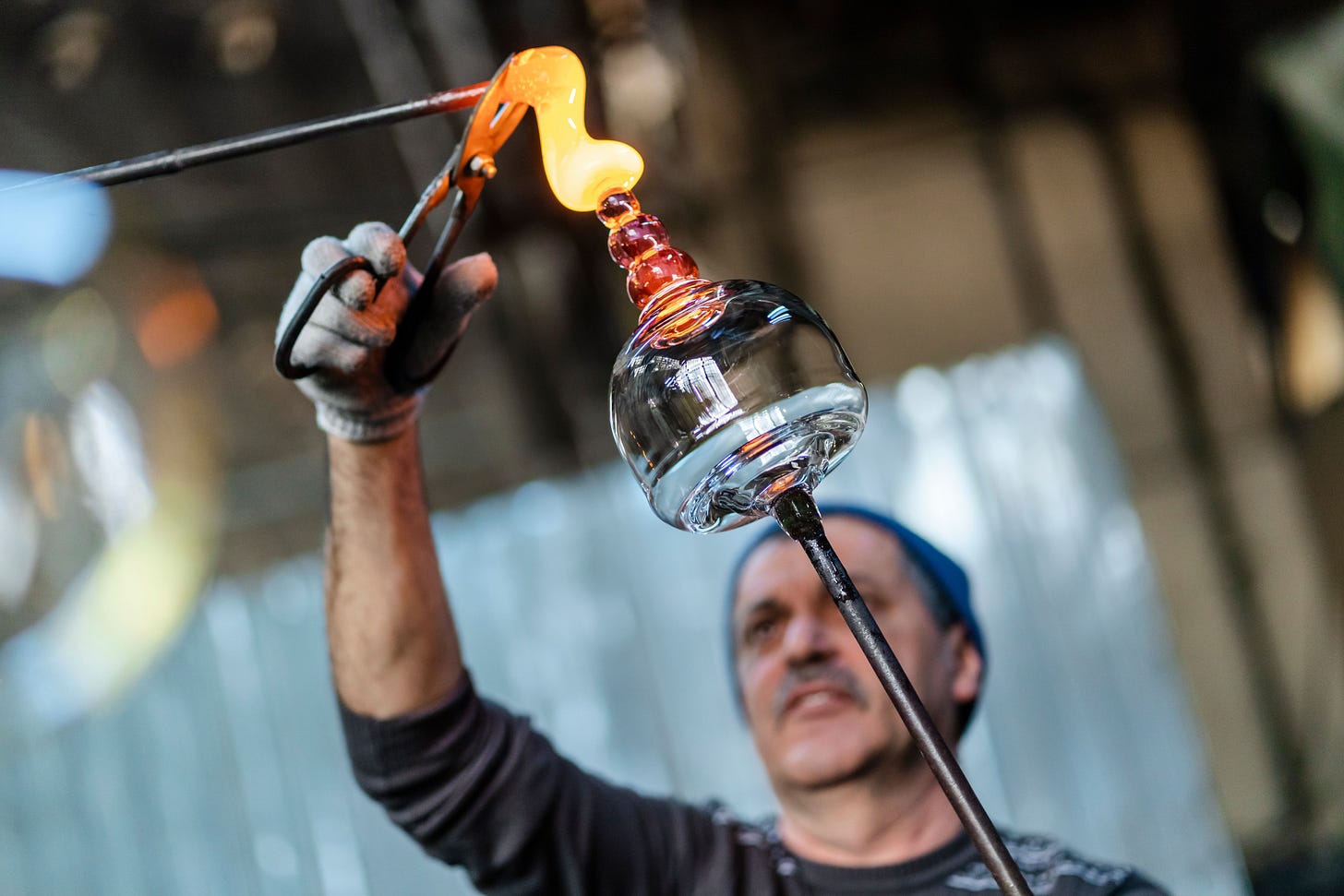Design, Craft, and Meaning: Part 3
Made by Human Hands: In a world of mass production, why we need the human touch more than ever.
There’s something unmistakable about an object made by human hands.
You can feel it—sometimes before you even realize what you’re touching. A carved wood spoon, slightly uneven at the edge. A hand-stitched pillow with thread that tugs just a little in the corner. A ceramic plate, warm with life, because it’s not pretending to be perfect.
These objects aren’t flawless. That’s the point.
They are alive.
We live in an age of precision. Of mass production. Of engineered sameness. Our homes are filled with things that were never touched by a human until they landed in a box on our doorstep. And while this model has brought speed and affordability, it has also ushered in a quiet emptiness.
What’s missing is presence.
When something is made by hand, it carries the presence of its maker.
Every decision, every adjustment, every moment of effort is captured in the final form. There’s a kind of memory embedded in the material—a trace of time, of skill, of soul.
That trace is what makes us feel something.
We don’t just admire the object—we connect to the person behind it.
The blacksmith at the forge. The weaver at the loom. The luthier stringing a handmade violin. These aren't just professions. They're acts of devotion.
And in a world where we’ve become increasingly disconnected from the source of things, handmade objects reintroduce us to the human story.
They ground us.
They slow us down.
They remind us that perfection isn’t the goal—honesty is.
We may never meet the people who made our favorite bowl or blanket or chair. But when something is made with care, by someone who knows their craft, it becomes more than a thing. It becomes a relationship.
Questions for Reflection
Do you own something made by hand that brings you quiet joy?
What story does it tell?
How can we support and celebrate the makers in our communities?
Next up: Post 4 – Designing for Feeling, Not Just Function: Why emotion is the missing layer in too much of today’s built environment.


